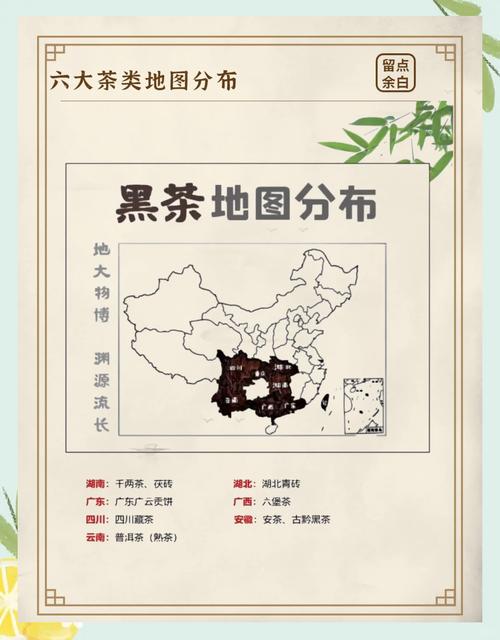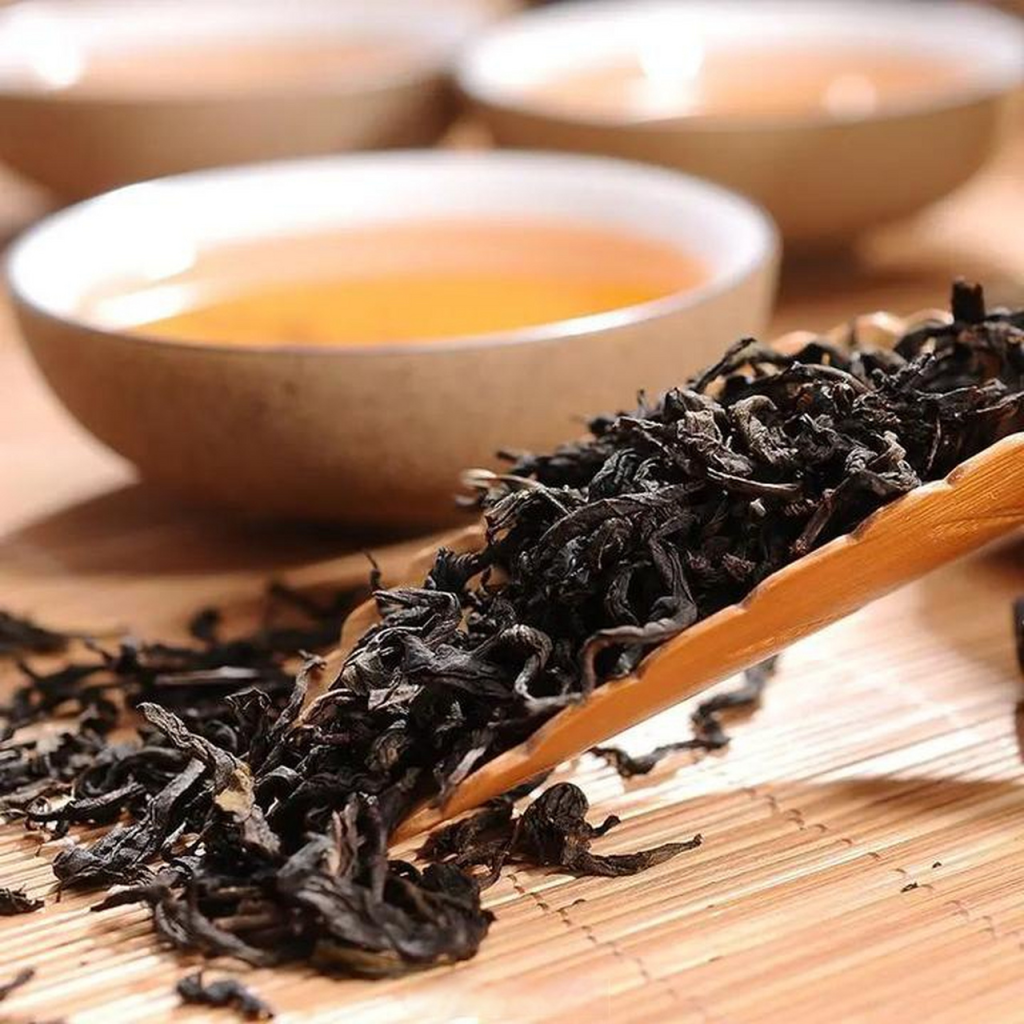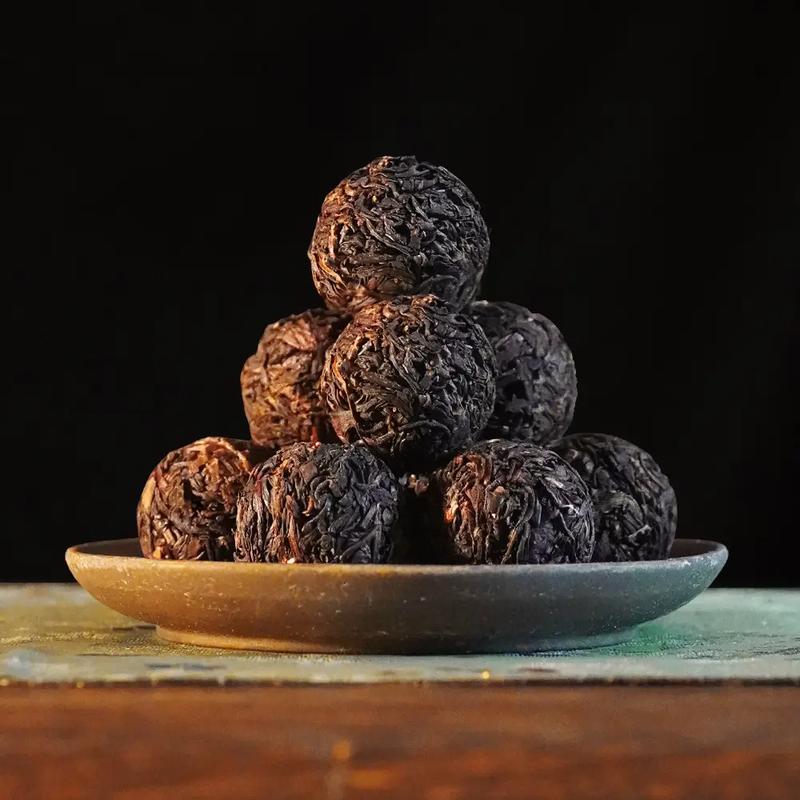Dark tea, also known as Heicha in Chinese, is a unique type of fermented tea with a long history and rich cultural heritage in China. It is primarily produced in several regions across the country, each contributing its unique terroir and production techniques to the final product. This article explores the main producing areas, growing environments, and varietal characteristics of Chinese dark tea.

Main Producing Areas
Chinese dark tea is mainly produced in the following regions:
- Hunan Province
- Anhua County: Renowned for Anhua Dark Tea, this region boasts a long history of tea cultivation and processing. Anhua Dark Tea is known for its unique smoky aroma and mellow taste.
- Varieties: Fuzhuan, Qianliang Tea, Heizhuan Tea, Sanjian Tea, etc.
- Sichuan Province
- Main Producing Regions: Ya’an, Kangding, and other areas.
- Representative Tea: Sichuan Tibetan Tea (also known as Border Tea), which is a staple drink for Tibetan people living in high-altitude areas.
- Characteristics: Deep brown in color, fully fermented, with a mellow and thick taste.
- Yunnan Province
- Main Producing Regions: Xishuangbanna, Pu’er City, Lincang City, and Baoshan City.
- Representative Tea: Pu’er Tea, especially Pu’er Ripe Tea, which is famous for its unique aged aroma and mellow taste.
- Characteristics: Diverse tea varieties and production methods, with a focus on natural fermentation and aging.
- Guangxi Province
- Main Producing Region: Wuzhou City, especially the Liupu Township in Cangwu County.
- Representative Tea: Liupu Tea, known for its red, thick, mellow, and aged characteristics.
- Characteristics: Unique processing techniques that result in a tea with a distinctive betel nut aroma.
- Hubei Province
- Main Producing Region: Chibi City, known for Qingzhuan Tea.
- Characteristics: Rectangular brick shape, dark brown color, pure aroma, and mellow taste.
- Shaanxi Province
- Main Producing Region: Jingyang County, Xianyang City.
- Representative Tea: Jingyang Fuzhuan Tea, with a history of over 600 years.
- Characteristics: Tightly pressed tea bricks, dark brown color, abundant “golden flowers” (a beneficial fungus), and a mellow taste.
- Anhui Province
- Main Producing Region: Qimen County.
- Representative Tea: Guyi Dark Tea (An Tea), a historical tea with a unique aging process.
- Characteristics: Dark color, slightly red tea soup, fragrant and astringent taste.
Growing Environments
The growing environments for dark tea vary across the main producing areas, but they generally share some common characteristics:
- Climate: Most dark tea-producing regions have a subtropical monsoon climate with abundant rainfall, mild temperatures, and distinct seasons. This climate is conducive to the growth of tea plants and the fermentation process of dark tea.
- Soil: The soil in these regions is usually acidic and rich in nutrients, providing essential elements for tea plants to grow and develop.
- Altitude: Many dark tea-producing areas are located at high altitudes, where the cooler temperatures and larger diurnal temperature variations contribute to the unique qualities of the tea.
Varietal Characteristics
Dark tea varieties differ in appearance, aroma, and taste based on their region of origin and production techniques. Some notable characteristics include:
- Anhua Dark Tea: Known for its smoky aroma and mellow taste, with a dark brown appearance and orange-yellow tea soup.
- Sichuan Tibetan Tea: Deep brown in color, fully fermented, with a strong and mellow taste. It is often pressed into bricks for easy transportation and storage.
- Pu’er Tea: Especially Pu’er Ripe Tea, which has a unique aged aroma and mellow taste. The tea soup is usually red and thick, with a lasting aftertaste.
- Liupu Tea: Characterized by its red, thick, mellow, and aged taste, with a distinctive betel nut aroma.
- Qingzhuan Tea: Rectangular brick shape, dark brown color, pure aroma, and mellow taste. It is often aged for several years to enhance its flavor.
Conclusion
Chinese dark tea, with its rich variety and unique charm, is produced across multiple regions in China. Each producing area contributes its unique terroir, production techniques, and cultural heritage to the final product, resulting in a diverse range of dark teas. Whether it’s the smoky aroma of Anhua Dark Tea or the aged aroma of Pu’er Tea, Chinese dark tea continues to captivate tea enthusiasts worldwide with its exquisite taste and health benefits.



